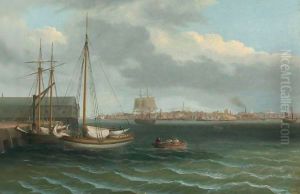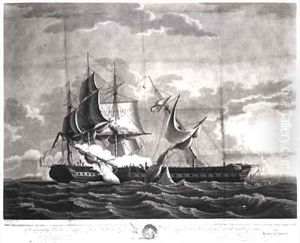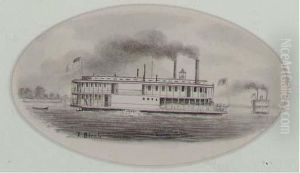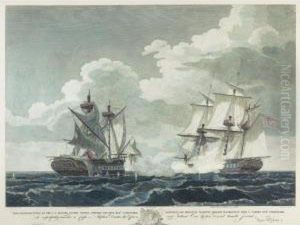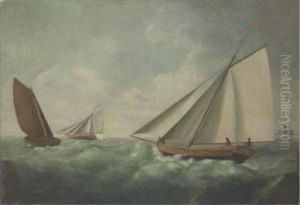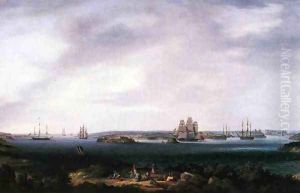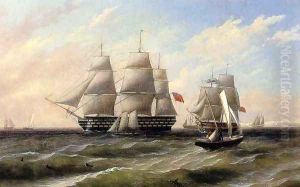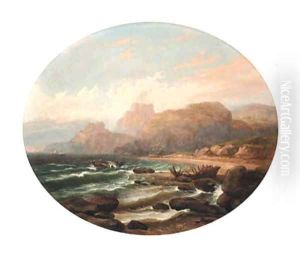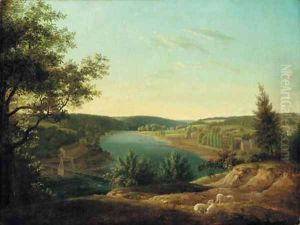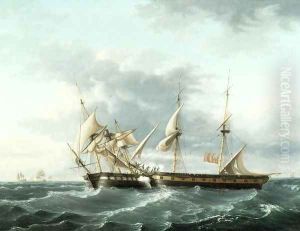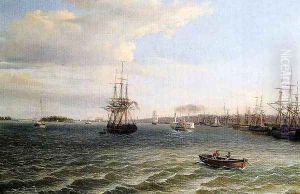Thomas Birch Paintings
Thomas Birch was an Anglo-American artist, primarily known for his marine and landscape paintings. Born on September 26, 1779, in London, England, Birch emigrated with his family to the United States in 1794, settling in Philadelphia, which would become the center of his artistic career. The son of a miniaturist and engraver, William Birch, Thomas was exposed to the arts from an early age and soon developed his own artistic talents.
In the United States, Birch became renowned for his marine subjects, particularly for his depictions of historical naval battles from the War of 1812. His work 'Constitution and Guerriere', which illustrates the USS Constitution's victory over the HMS Guerriere, is one of his most famous paintings. Birch's attention to detail and his ability to convey the drama and intensity of maritime engagements earned him the title 'the American Vernet,' a reference to the 18th-century French marine painter Claude Joseph Vernet.
Aside from marine paintings, Birch also produced landscapes that reflected the American wilderness and the rapidly changing environment due to the nation's westward expansion. His work was influenced by the romantic and picturesque movements, which often emphasized the sublime and awe-inspiring qualities of nature.
Throughout his career, Thomas Birch exhibited his works at the Pennsylvania Academy of the Fine Arts and was among the artists chosen to exhibit at the first exhibition of the National Academy of Design in New York. His paintings are now housed in many prominent museums and collections across the United States.
Birch's contribution to American art was significant, as he helped to foster a growing appreciation for naval subjects and the American landscape during the early 19th century. Birch passed away on January 3, 1851, in Philadelphia, leaving behind a legacy as one of America's foremost painters of marine scenes and landscapes of his era.















